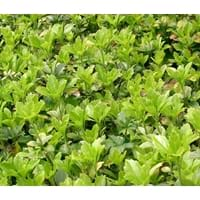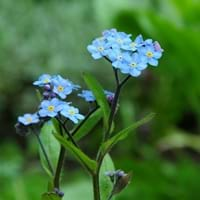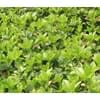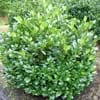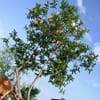Life Span
Perennial
Annual and Perennial
Type
Broadleaf Evergreen
Flowering Plants, Shrubs
Origin
China, Japan
Eastern Asia
Types
Pachysandra procumbens, Pachysandra terminalis
Bigleaf hydrangea, Hortensia, Smooth hydrangea, Oakleaf hydrangea, Annabelle
Habitat
Deep, Hardwood forests, moist forests, Terrestrial
Fields, gardens, meadows, rocky outcrops, waste ground, yards
USDA Hardiness Zone
4-8
Not Available
AHS Heat Zone
Not Available
8 - 1
Habit
Prostrate/Trailing
Clump-Forming
Flower Color
White
Blue, White
Flower Color Modifier
Bicolor
Bicolor
Fruit Color
Not Available
Not Available
Leaf Color in Spring
Dark Green
Green, Gray Green
Leaf Color in Summer
Dark Green
Green, Gray Green
Leaf Color in Fall
Dark Green
Green, Gray Green
Leaf Color in Winter
Dark Green
Light Green
Leaf Shape
Toothed
Lanceolate
Plant Season
Spring, Summer, Fall, Winter
Spring, Summer
Sunlight
Partial shade, Full Shade
Full Sun, Partial Sun
The pH of Soil
Acidic, Neutral
Acidic, Neutral
Soil Drainage
Well drained
Well drained
Bloom Time
Late Spring, Early Summer
Early Spring, Spring, Late Spring, Early Summer, Summer, Late Summer
Tolerances
Not Available
Not Available
Where to Plant?
Ground
Ground
How to Plant?
Rooted stem cutting, Seedlings, Stem Cutting
Divison, Seedlings
Plant Maintenance
Medium
Medium
Watering Requirements
Needs more water during establishment
Do Not over Water
In Summer
Lots of watering
Lots of watering
In Spring
Moderate
Moderate
In Winter
Average Water
Average Water
Soil pH
Acidic, Neutral
Acidic, Neutral
Soil Drainage Capacity
Well drained
Well drained
Sun Exposure
Partial shade, Full Shade
Full Sun, Partial Sun
Pruning
Remove damaged leaves, Remove dead branches, Remove dead leaves
Remove damaged leaves, Remove dead branches, Remove dead leaves
Fertilizers
All-Purpose Liquid Fertilizer
All-Purpose Liquid Fertilizer
Pests and Diseases
Alternaria leaf blight, Red blotch, Stem rot
Red blotch
Plant Tolerance
Drought
Drought
Flowers
Insignificant
Showy
Flower Petal Number
Single
Single
Foliage Texture
Medium
Medium
Foliage Sheen
Glossy
Matte
Attracts
Ants, pollinators
Bees, Flies
Allergy
allergic reaction
Chest tightness, Diarrhea, Dizziness, Nausea, Vomiting
Aesthetic Uses
Ground Cover, Mass in beds, slopes
Beautification, Cottage Garden, Ground Cover, Showy Purposes
Beauty Benefits
Not Available
Not Available
Environmental Uses
Air purification
Air purification
Medicinal Uses
Unknown
Fever, Kidney problems, Urinary tract problems
Part of Plant Used
Fruits
Flowers, Root
Other Uses
Planted in shelterbeds, Showy Purposes, Used for bedding in gardens
Culinary use, Used as Ornamental plant
Used As Indoor Plant
Yes
No
Used As Outdoor Plant
Yes
Yes
Garden Design
Edging, Groundcover
Bedding Plant, Cottage garden, Edible, Hanging Basket, Wildflower
Botanical Name
PACHYSANDRA terminalis
Myosotis arvensis
Common Name
japanese spurge, japanese pachysandra, carpet box
Forget-Me-Not
In Hindi
pachysandra
Forget-Me-Not
In German
Ysander
Forget-Me-Not
In French
pachysandra
Forget-Me-Not
In Spanish
Pachysandra
Arce japonés
In Greek
Pachysandra
Forget-Me-Not
In Portuguese
Pachysandra
Forget-Me-Not
In Polish
Runianka
Forget-Me-Not
In Latin
Pachysandra
Forget-Me-Not
Phylum
Vascular plant
Magnoliophyta
Family
Buxaceae
Boraginaceae
Genus
Pachysandra
Myosotis
Clade
Angiosperms, Eudicots
Not Available
Tribe
sarcococceae
Not Available
Subfamily
NA
Not Available
Number of Species
Not Available
Difference Between Pachysandra and Field Forget Me Not
If you are confused whether Pachysandra or Field Forget Me Not are same, here are some features about those plants to help you choose better. Many people think that these two plants have the same characteristics, but one can see Pachysandra and Field Forget Me Not Information and learn more about it. Fertilizers required for proper growth of Pachysandra are All-Purpose Liquid Fertilizer, whereas for Field Forget Me Not fertilizers required are All-Purpose Liquid Fertilizer. Hence, one should know the basic difference between Pachysandra and Field Forget Me Not if you are planning to have them in your garden to enhance its beauty.
<
Flowering PlantsImportance of Pachysandra and Field Forget Me Not
Want to have the most appropriate plant for your garden? You might want to know the importance of Pachysandra and Field Forget Me Not. Basically, these two plants vary in many aspects. Compare Pachysandra and Field Forget Me Not as they differ in many characteristics such as their life, care, benefits, facts, etc. Every gardener must at least have the slightest clue about the plants he wants to plant in his garden. Compare their benefits, which differ in many ways like facts and uses. The medicinal use of Pachysandra is Unknown whereas of Field Forget Me Not is Fever, Kidney problems and Urinary tract problems. Pachysandra has beauty benefits as follows: Not Available while Field Forget Me Not has beauty benefits as follows: Not Available.
Compare Facts of Pachysandra vs Field Forget Me Not
How to choose the best garden plant for your garden depending upon its facts? Here garden plant comparison will help you to solve this query. Compare the facts of Pachysandra vs Field Forget Me Not and know which one to choose. As garden plants have benefits and other uses, allergy is also a major drawback of plants for some people. Allergic reactions of Pachysandra are allergic reaction whereas of Field Forget Me Not have Chest tightness, Diarrhea, Dizziness, Nausea and Vomiting respectively. Having a fruit bearing plant in your garden can be a plus point of your garden. Pachysandra has no showy fruits and Field Forget Me Not has no showy fruits. Also Pachysandra is not flowering and Field Forget Me Not is not flowering . You can compare Pachysandra and Field Forget Me Not facts and facts of other plants too.
